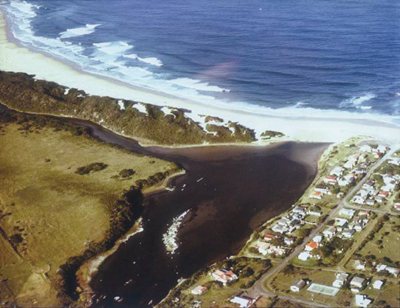Some Key Questions
Issues to consider
The following points or questions are provided as aids to the assessment of a planned structure or activity in terms of its potential impact on the estuarine environment or on normal estuarine functioning.The severity or significance of the impact would have to be assessed in relation to the nature of the particular estuarine system in question taking into consideration aspects such as size, rarity, conservation status or presence or absence of similar areas in neighbouring estuaries or in the same geographical area. Some questions that should be asked are as follows:
- Will the development/activity destroy or modify any part of the estuarine environment, especially any wetland?
- Will it modify natural patterns of mouth opening/closure? Will it affect the position of natural breaches in any sandbar at the mouth?
- Will it result in any change in natural water levels? In the case of an open and therefore tidal system will it affect tidal exchange ?
- Will it modify patterns of sedimentation and erosion and therefore change positions of channels? Will it be aesthetically acceptable?
- Will it make sensitive areas, e.g. mangroves or salt marshes, more accessible and therefore vulnerable to disturbance by people or domestic animals?
- Will it result in increased human activity in areas sensitive to disturbance, e.g. bird feeding or roosting sites?
- Will it act as a source of litter or pollution, e.g. boat fuel at a jetty, wastewater, fertilisers or seepage from septic tanks associated with housing developments or camping/caravan parks?
- Will it result in mobilisation and re-distribution of sediments and effects such as increased turbidity?
- Does the locality of the activity/development presuppose and depend on an assumption of natural stability, e.g. of a bank or sandbar, which is actually dynamic?
- Is the proposed development within or below a known floodlevel?
- Will it result in the introduction of alien species of plants or animals?
- Is it compatible with other activities or structures whether pre-existing or planned?

It should be noted that an estuarine manager or intending user should be aware of events beyond the actual bounds of the estuary and particularly in the catchment, which could ultimately impinge on the estuary. The sort of questions that then become particularly relevant include the following:
- Will the development/activity influence the input of freshwater into the estuary? How will the input be affected? Will there be a net reduction? Will there be a change in seasonal flow patterns?
- Will the abstraction/ impoundment permanently damp any flood peaks?
- Will there be sufficient control of water releases to be able to simulate a flood if this is required as part of an integrated estuary management plan?
- Will the outflowing water from the impoundment be very different from natural river water in terms of e.g. suspended material, nutrient content, temperature, or oxygen content? What effects are these changes likely to have on the estuary?
Estuarine habitats around the world are under threat because of human pressures, usually in the immediate area but at times because of abusive land use patterns in catchment areas hundreds of kilometers away. The inherent attractiveness and productivity of many estuarine areas sows the seeds of their own ultimate destruction through port and urban development, pollution or over-exploitation of their living resources. This has already occurred on a frightening scale in regions of the world richly endowed with estuarine environments. In the southern African situation where the estuarine habitat is such a small proportion of the total coastal environment it is even more incumbent on us to be aware of the nature and value of this very special environment.